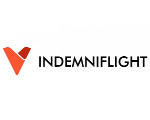Trunk roads vary from almost motorway standard dual-carriageways to narrow two-lane roads passing through a succession of villages where the speed limit is 50kph (30mph).
Motorways
France boasts one of the best motorway (autoroute) networks in Europe, totalling over 9,500km (6,000mi). Unfortunately they’re also among the world’s most expensive, being mostly toll roads built by private companies (see below). Because of this, driving on motorways is considered a luxury by many French people and they therefore have the lowest traffic density of any European motorways. Partly for this reason, motorways are also France’s safest roads – with the notable exception of the Paris Périphérique, an eight-lane race track around the city centre on which there’s an average of one fatal accident a day!
Because of the continuous expansion of the network (2005 saw the completion of a continuous motorway route from Calais to Spain via Bordeaux and 2006 of the A89 from Bordeaux to Switzerland, barring a short section in Dordogne), you shouldn’t use a motoring atlas that’s more than a few years old.
Tolls: Most French motorways are toll roads (à péage) and are among the most expensive in Europe, although there are plans to privatise half the motorways in the south, which could reduce charges by up to 30 per cent. Rates aren’t standardised throughout France and vary with the age of the motorway and the services provided. There are no tolls on the sections of motorways around cities. A new system of tolls has been introduced in some areas with higher tolls during peak periods. On average, however, motorway travel costs an average of €0.07 per kilometre for a car. There are five vehicle categories on most motorways, and motor-homes and cars towing trailers or caravans are more expensive than cars alone.
The approximate costs of driving a standard car from Calais or Le Havre to various French towns are listed here: Biarritz:€65, Nancy: €28, Bordeaux: €62, Nantes: €56, Cahors: €38, Nice: €77, Clermont-Ferrand: €47, Paris: €16, Dijon: €36, Perpignan: €54, Grenoble: €52,Poitiers: €44, Lyon: €67, Strasbourg: €38, Marseille: €63.
An Autoroute Tarifs leaflet and other traffic information is available from the Association des Sociétés Françaises d’Autoroutes (ASFA, 01 49 55 33 or 08 92 68 10 77, http://www.autoroutes.fr ).
Tolls are also levied to use the Mont Blanc (Chamonix-Entrèves, Italy, 11.6km/7.2mi) tunnel, now in service again, the Fréjus (Modane- Bardonecchia, Italy, 12.8km/8mi) and Bielsa (Aragnouet-Bielsa, Spain, 3km/1.86mi) tunnels, and a number of bridges, including the new Millau viaduct and the Ponts de Normandie, Saint-Nazaire and Tancarville.
If you’re travelling long distances, it may be cheaper to fly or take a TGV and will almost certainly be quicker, safer and less stressful.
Other Roads
Unlike French motorways, main trunk roads (route nationale) are jammed by drivers (including those of heavy goods vehicles) who are reluctant to pay or cannot afford the high motorway tolls. If you must get from A to B in the shortest possible time, there’s no alternative to the motorway (apart from taking a plane or train). However, if you aren’t in too much of a hurry, want to save money and wish to see something of France, you should avoid motorways. The money saved on tolls can pay for a good meal or an (inexpensive) hotel room. Routes nationales and other secondary roads are often straight and many are dual carriageways, on which you can usually make good time at (legal) speeds of between 80 and 110kph (50 to 70mph). On the other hand, many trunk roads pass through towns and villages, where the limit is reduced to 50kph (30mph), which can make for slow progress.
Information
In June each year, the French Ministry of Transport issues a ‘wily bison’ map (Carte de Bison futé) showing areas of congestion and providing information about alternative routes (itinéraire bis), indicated by yellow or green signs. The map is available free from petrol stations and tourist offices in France and from French Government Tourist Offices abroad, which will also provide information about motorways, tolls and driving rules in France. There are around 90 information rest areas throughout France, indicated by a black ‘i’ and an Information Bison futé sign. Green-arrowed holiday routes (flèches vertes) avoiding large towns and cities are also recommended. Colour-coded traffic days and traffic jams (orange for bad, rouge for very bad and noir for appalling) are announced on the radio and television.
Even if you don’t have in-car GPS, route planning is simple thanks to the internet, where several sites can help you find the quickest and most economical route to your French home, including http://www.mappy.com , and http://www.rac.co.uk , http://www.theaa.com and http://www.viamichelin.co.uk (all in English).
Up-to-date information about French roads can be obtained from the Ministère de l’Equipement, des Transports et du Logement, Direction des Routes, Service du Contrôle des Autoroutes, La Défense, 92055 Paris Cedex (01 40 81 21 22). Details of current roadworks can be found by phoning Information routière (08 26 02 20 22) or by tuning in to Autoroute Info on 107.7FM. Details of planned new roads are provided in The Best Places to Buy a Home in France.
This article is an extract from Buying a home in France. Click here to get a copy now.


